Firefighter's memorabilia keeps sacrifice and heroism of 911 alive
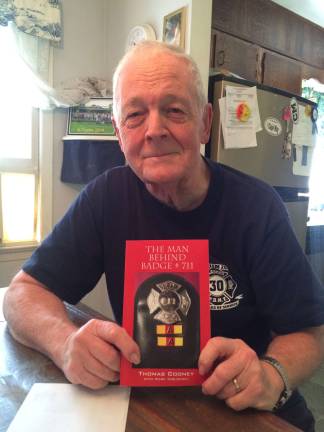
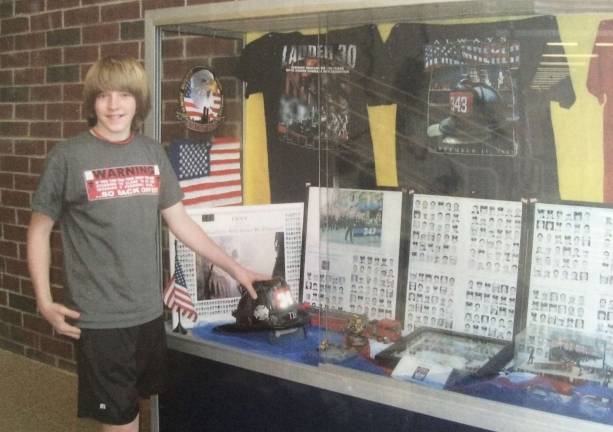
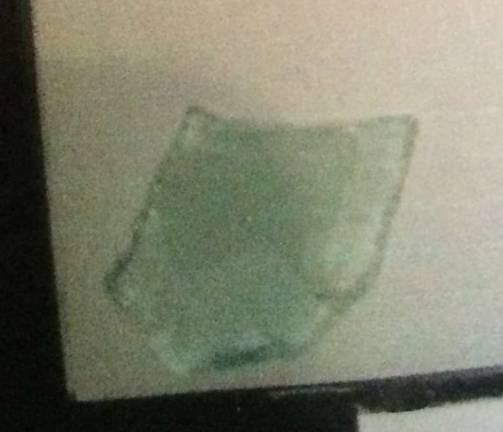
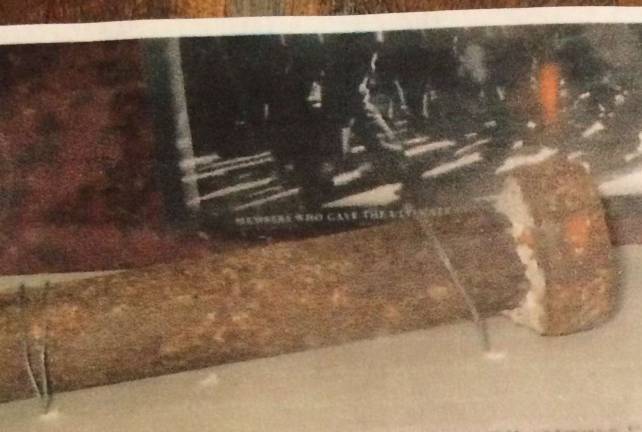
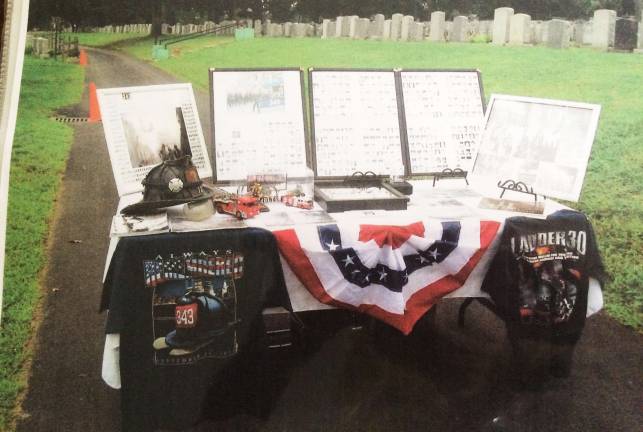
By Laurie Gordon
MCAFEE — Bravery, honor, valor, loyalty, patriotism, fraternity, dedication, perseverance, heroism, sacrifice, selflessness and family. These qualities describe a man named Tom Cooney. He's a husband, father and grandfather and loves his family, but he also has another family: the firefighters of New York City, and he wants to make sure those who lost their lives in the September 11, 2001 tragedies are never forgotten.
Within hours of the Twin Towers' falling on that fateful Tuesday, retired firefighter Cooney (then in his 60s) learned that the missing firefighters included an old friend, First Deputy Commissioner William Feehan. He and Feehan had worked together for years at Ladder Co. No. 30 in Harlem. By that Saturday, Cooney could sit still no longer and left his home in Sussex County to join a corps of retired firefighters. He headed to the firehouse across from where the South Tower had fallen to report for duty.
“There's no way to describe it,” he said. “When I first arrived on the scene, I walked around in a daze for a while before I could check in. It was just tragic and unbelievable.”
Cooney recalled a massive sphere of steel embedded in an office building. Then there was the policeman he met with a rescue dog. “He was so frustrated because the dog would sniff something, where someone could be stuck still alive, but the heavy equipment hadn't gotten there yet, so there was no way to help them.”
“They told me to go around the block to the plaza and I had to climb over large blocks of concrete to get to where they needed me,” he said. There, Cooney volunteered, working eight to 10-hour shifts through the following April. His friend, Feehan, lost his life along with 342 other firefighters in the 911 tragedy. Wrapping his mind around the loss and the enormity of the attacks continue to be difficult.
During his time doing what he could to help, Cooney began picking up bits and pieces he found at the scene. Little things, like bolts, he decided to gather with the plan of someday showing them to people so 911 would not ever be forgotten. When he hurt his knee during one of his last trips into the city to help and the injury turned out to be a fast-growing sarcoma, his days responding to disasters were over, but his ambition to educate and remind people of the tragedy burned bright. Cooney gathered the things he'd found, coupled them with photos of those who had lost their lives, added things like his fire hat and started visiting libraries, banks and memorials to show the public.
“That infamous day and the heroic sacrifices of so many Americans, especially those of the New York Fire Department, need to be continuously shared with our nation's young people so that they may know and never forget what happened on September 11, 2001,” said Martin Supman, chief school administrator and Middle School principal of the Hardyston School District. “We all need heros in our lives to look up to and emulate. Your display helps promote the ultimate meaning of service.”
“The tragedy of 9-11, the recovery efforts and the impact the day had on us as a nation must never be forgotten,” said Paula Ray, principal of Career and Technical Education at Orange-Ulster Boces in Goshen, New York. The center was another of Cooney's numerous stops to show his display. “Your presentation was a reminder about the loss of life, the dedication and perseverance of the rescue workers and how essential it is to reflect on history.”
“The most unique thing I found was a piece of glass,” Cooney said. “You'd think with all the glass windows that were in those towers, there'd be lots of glass around, but there was hardly a trace. The burning of the buildings and the high octane gas from the planes meant it was all destroyed.”
Cooney recently had open heart surgery. Melanoma was discovered by his ear, and he needed to have lymph nodes in his neck removed. And he needs a knee replacement where the sarcoma was. Consequently, though he loved touring with his collection, he realized it was time for it to find a permanent home. He penned dozens of letters to various museums around the country, and finally received a glowing letter asking that his collection be housed at the Trolly Museum in Kingston, New York.
“The Trolley Museum of New York would be pleased and excited to receive any or all of your 911 artifacts for permanent display at our museum and in a building which we plan to erect in the future housing all 911 memorabilia,” wrote Nancy Riseley, treasure and trustee of the Trolley Museum.
Cooney was thrilled.
“It's a great museum and they are going to build a new building to house a train car, a police car that was at the tragedy and other memorabilia along with my collection,” he said. For now, Cooney's exhibit is at the Trolley Museum in a temporary location and there's supposed to be a ceremony welcoming it on or around September 11.
Prior to 911, Cooney was one of the firefighters at the 1966 building fire on East 23rd Street in NYC. His role there was to search for the bodies of the 12 firefighters who were killed in the blaze. Until 911, it was the department's single-worst loss of life. It was with a look of loss and sadness that he pointed himself out in the crowd of firefighters and showed a photo of the funeral at St. Patrick's Cathedral for those who died.
THE BOOK
With so many memories about his firefighting career, when Cooney's wife, Edith, was on and extended period of bed rest a few years ago, he began writing his stories down. As fate would have it, he mentioned this to a friend who is a writer and when Mark Yablonsky started reading, he couldn't believe Cooney's tales. Soon, Cooney was giving Yablonsky his writing to be edited and the book The Man Behind Badge #711 was born, co-authored by the two.
If Badge #711 could talk, it would have many tales to tell. It was assigned to Cooney in June of 1959 when the Queens, New York, native was sworn in to the New York City Fire Department. Cooney remained there until 1979 when he retired, but within a few years found a second career working at the state prison in Annandale. Cooney also held a series of part-time jobs while working in the FDNY including washing windows, painting houses, delivering auto parts and working for UPS during the holidays.
The book speaks of both the good and tragic times detailing many of the fires and rescues of which Cooney was a part. One of his favorite memories is of the fellow fire fighter he met when he was at his first commercial plane crash. The two planned to meet up when it was all over, but a second 2-alarm fire came in that same day and his new friend perished while trying to save victims trapped in a house fire.
“The book is about the unique experiences and people I've met,” Cooney said. “It's not technical, it's just how some great stories happened in the life of a firefighter.” Ever since he was a little boy, Cooney was intrigued with becoming a firefighter: saving lives and property. Now 82, Cooney said his book is “dedicated to my children and grandchildren to better understand why I love this job.”
Cooney resides in McAfee and has an infinite amount of pride in having been part of Ladder 30 in Harlem. He wears his navy blue shirt that bears its emblem and carries a photo album at his side which contains photos of his 911 collection, letters and other bits and pieces that remind him of his career. Tucked inside the album is his book. Cooney's collection of 911 memorabilia sits in The Trolley Museum (89 East Strand, Kingston, NY ~ www.tmny.org) and The Man Behind Badge #711 can be found through Amazon.com, but he prefers people go pick it up at their local library.
“I will always have two families, “Cooney said with a knowing look in his eyes. “They are my loved ones and the other is the brotherhood of firefighters.”